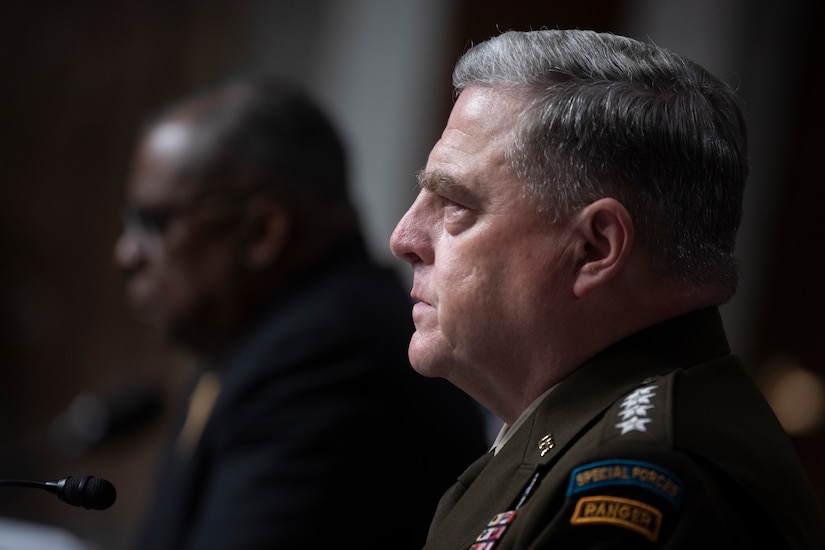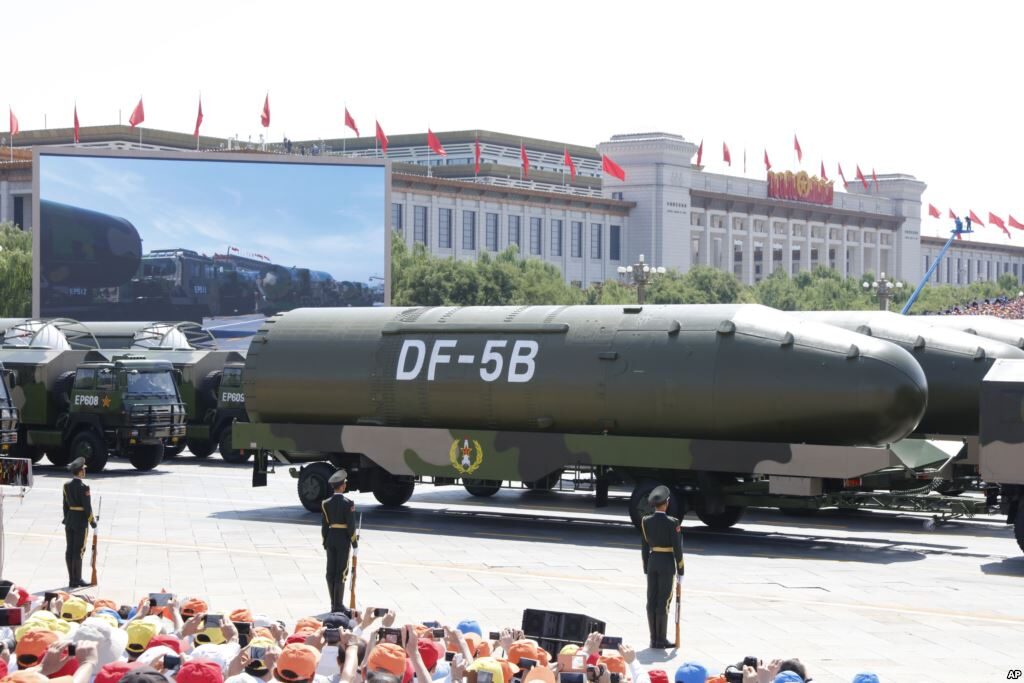COLIN CLARK

WASHINGTON: A short exchange during a Senate hearing on the 2022 budget appears to have revealed what experts say is an important shift in how the Pentagon views the Chinese military and its nuclear forces.
“This is a new framing of the nuclear modernization and deterrence challenge,” says Bryan Clark, a strategic expert at the Hudson Institute. “The size and capability of our arsenal has not been driven in the past by the PRC’s nuclear forces, but clearly the DoD is beginning to use China as a pacing threat alongside Russia.”
It began with a question by Sen. John Hoeven, from the state where Minot Air Force Base houses a substantial portion of the nation’s ICBM nuclear force. The North Dakota lawmaker asked Defense Secretary Lloyd Austin and Gen. Mark Milley, chairman of the Joint Chiefs of Staff, if the existing US strategic deterrent would remain “credible” if China doubled the size of its nuclear forces.
Here’s Milley’s reply:
“If we continue to fully modernize the triad then the US nuclear deterrent is fully adequate to deter any adversary to include China, even if China doubled what they have right now.
“There’s no question in my mind, but deterrence, as you know, requires not only the capability and the will but also the communication, and the adversary needs to understand that you have the capability and their will,” Milley replied. “Today, they’re adequate and, I think, once modernized they’ll be adequate in the future. The conventional piece — the nuclear piece and the conventional piece — go hand in hand and it’s a dynamic that works in order to keep great power peace, and it’s very, very important that we retain overmatch relative to China and Russia.”
Much of this shift appears to arise from China’s own nuclear modernization plans. SIPRI, which produce the authoritative annual Yearbook on the world’s nuclear forces, in the latest 2021 edition, says: “China is in the middle of a significant modernization and expansion of its nuclear weapon inventory.”
Dean Cheng, one of the West’s top experts on the Chinese military, goes further, saying that: “China is now pushing modernization of its nuclear forces, and this calls into question some basic assumptions, including how much fissile material they have. The broad expanse of Chinese nuclear modernization programs, including an air-breathing portion, is very different from what had been seen before.”

DF-5B ICBM at 2015 China Victory Day parade
SIPRI’s 2021 Yearbook says that China has “an estimated total inventory of about 350 nuclear warheads. This is an increase of 30 from the previous year, due largely to the indication that the DF5B intercontinental ballistic missile (ICBM) can carry more warheads than previously believed. Just over 270 warheads are assigned to China’s operational land- and sea-based ballistic missiles and to nuclear-configured aircraft. The remainder are assigned to non-operational forces, such as new systems in development, operational systems that may increase in number in the future, and reserves.”
Combine that with what the Heritage Foundation expert says is a shift in Chinese views of nuclear escalation and nuclear doctrine. For decades China, which has a declared No First Use policy, held to what Cheng calls its “minimal deterrent” posture. The new Chinese view is “towards more of a ‘limited deterrent,’ or beyond. I’ve been asked, for example, about whether the PRC might be adopting a ‘launch-on-warning’ posture, and whether the Chinese are developing the NC3 (nuclear command, control, and communications) capabilities necessary to support this.”
World nuclear forces, January 2021
Country Deployed warheads* Other warheads** Total 2021 Total 2020
USA 1 800 3 750 5 550 5 800
Russia 1 625 4 630 6 255 6 375
UK*** 120 105 225 215
France 280 10 290 290
China 350 350 320
India 156 156 150
Pakistan 165 165 160
Israel 90 90 90
North Korea**** … [40–50] [40–50] [30–40]
Total 3 825 9 255 13 080 13 400
Source: SIPRI Yearbook 2021.
Bryan Clark says Milley’s comments before the Senate Armed Services Committee mark more than a “rhetorical change” for US policy. “The thinking on Russian nuclear weapons use had been that Moscow might escalate and use a small number of weapons to gain an advantage during a conventional confrontation, but this theory has been somewhat discredited. Moreover, there are few plausible situations where the Russian government would feel existentially threatened by NATO and US. In contrast, numerous conventional scenarios could result in the CCP believing the regime was at existential risk and that nuclear escalation was necessary to prevent its collapse.”
China also, according to both Clark and Cheng, does not treat nuclear forces as a separate and unique component of its arsenals. “The growing diversity of the Chinese nuclear threat and its mixing in with conventional forces creates complexity for US commanders. It is also unclear what conditions would lead to PRC nuclear use, since their arsenal is growing and creating more options,” Clark says in an email.
That intertwining of capabilities makes it more difficult for the US and others to estimate China’s intentions, they say.
“The Chinese intertwining of nuclear and conventional capabilities (best seen in how the DF-21 (missile) has both nuclear and conventional variants OPERATING ALONGSIDE EACH OTHER) also highlights how differently the Chinese look at nuclear deterrence. We and the Russians are much more similar to each other in trying to LIMIT confusion or overlap,” Cheng observes.
And then we go back to Milley’s comments. Cheng says they indicate “a broader recognition within various parts of DOD/national security establishment that we have been operating under old assumptions when it comes to nuclear for perhaps too long.”
No comments:
Post a Comment